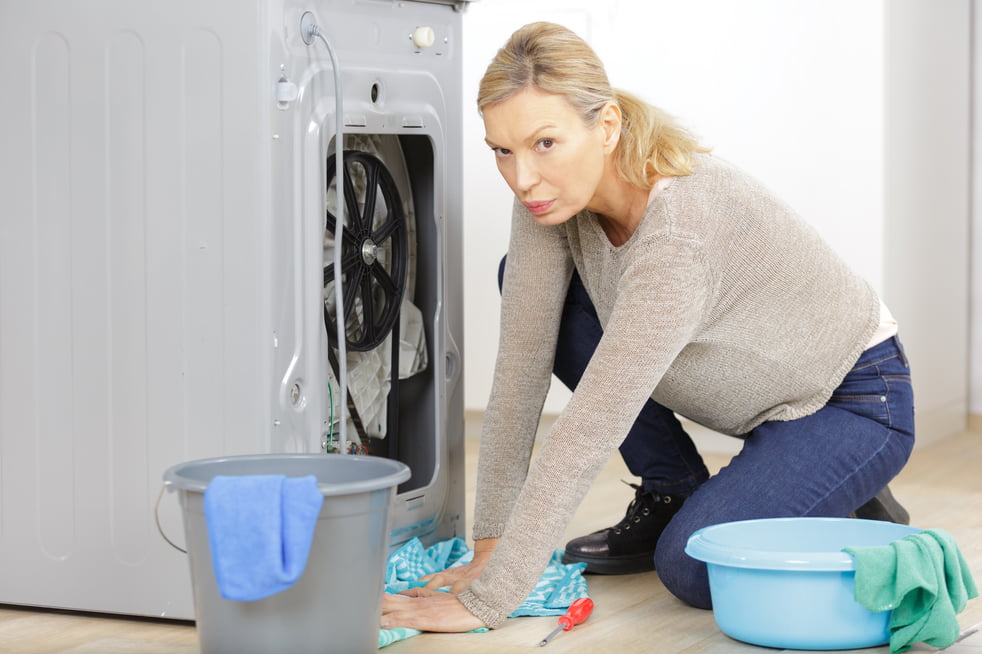Water can be a silent destroyer when it infiltrates the interior of your home. From subtle leaks to catastrophic floods, the damage caused by water can be extensive, costly, and sometimes irreversible. Preventing damage is easier when you have an understanding of how water affects different parts of your home’s interior. And knowing the proper prevention and mitigation steps can be crucial if issues arise. Please take the time to read this information carefully.
Structural Damage
Water intrusion can severely compromise the structural integrity of your home. When water seeps into the foundation, walls, or support beams, it can lead to a host of problems.
- Foundation Issues – Excess moisture in the soil surrounding your home’s foundation can cause it to shift, crack, or settle unevenly. This can result in sloping floors, stuck doors, and even wall collapse in severe cases.
- Wall Damage – Water penetrating walls can cause paint to bubble, wallpaper to peel, and drywall to warp or crumble. In wooden structures, prolonged exposure to moisture can lead to rot, weakening the overall structure.
- Ceiling Damage – Water stains, sagging, or bulging ceilings are clear indicators of water damage from above. This could be due to roof leaks, plumbing issues, or condensation in the attic. If left unaddressed, ceiling damage can progress to collapse, posing a serious safety hazard.
Flooring Deterioration
Different types of flooring react differently to water exposure. Here’s what you can expect from three common surfaces.
- Hardwood Floors – Water can cause hardwood planks to warp, cup, or buckle. Even a small amount of standing water can lead to irreversible damage if not dried quickly.
- Carpeting – Wet carpets can quickly become a breeding ground for mold and mildew. The padding underneath is particularly susceptible to water damage and may need to be replaced entirely.
- Tile and Laminate – While more resistant to surface water, these materials can still be damaged if water seeps underneath, causing adhesive failure or warping of the subfloor.
Mold and Mildew Growth
One of the most insidious effects of water damage is the potential for mold and mildew growth. These fungi thrive in moist environments and can start developing within 24-48 hours of water exposure. Mold not only damages surfaces, but also poses health risks, particularly for those with allergies or respiratory issues.
- Hidden Mold – Mold can grow in hidden areas such as behind walls, under floors, or in HVAC systems. This makes detection and remediation challenging and often requires professional intervention.
Electrical System Hazards
Water and electricity are a dangerous combination. Water damage can compromise your home’s electrical system in several ways.
- Short Circuits – Water can cause short circuits in wiring, leading to power outages or, worse, electrical fires.
- Corrosion – Moisture can corrode electrical components, switches, and outlets, necessitating replacement and posing safety risks.
- Appliance Damage – Water-damaged appliances may malfunction or become electrical hazards. Always have them inspected by a professional before use after water exposure.
Insulation Degradation
Water can significantly reduce the effectiveness of insulation, and damaged insulation can add significantly to renovation costs.
- Fiberglass Insulation – When wet, fiberglass insulation loses its insulating properties and can become a breeding ground for mold.
- Cellulose Insulation – This type of insulation can absorb large amounts of water, leading to sagging and reduced effectiveness. It may also promote mold growth if not properly dried.
Air Quality Issues
Water damage can severely impact indoor air quality, leading not only to soaring remediation costs but also to various health problems.
- Musty Odors – Persistent damp or musty smells are often indicators of ongoing water issues or mold growth.
- Increased Humidity – Excess moisture in the air can make your home feel uncomfortable and create an environment conducive to dust mites and other allergens.
Furniture and Personal Belongings
Water can wreak havoc on your personal possessions, too.
- Wooden Furniture – Wood can swell, warp, or develop mold when exposed to water. Finishes may also become cloudy or peel.
- Upholstered Items – Fabric furniture can become waterlogged, leading to mold growth and unpleasant odors. Often, these items need to be professionally cleaned or replaced.
- Electronics – Water exposure can short-circuit electronics, leading to data loss and equipment failure.
- Documents and Photos – Important papers and irreplaceable photographs can be ruined by water damage, emphasizing the importance of proper storage or digital backups.
Prevention and Mitigation
To protect your home’s interior from water damage:
- Regularly inspect and maintain your roof, gutters, and downspouts.
- Check and repair any plumbing leaks promptly.
- Check and repair any plumbing leaks promptly.
- Ensure proper grading around your home’s foundation to direct water away from the structure.
- Install and maintain sump pumps in basements or crawl spaces.
- Use dehumidifiers in damp areas like basements.
- Apply waterproof sealants to vulnerable areas like basement walls.
In the event of water damage, quick action is crucial. Remove standing water, dry affected areas thoroughly, and address the source of the water intrusion immediately. For significant damage, consult with water damage restoration professionals to ensure proper remediation and prevent long-term issues. By understanding how water can damage your home’s interior and taking proactive measures, you can protect your property, preserve your belongings, and maintain a safe, healthy living environment.

